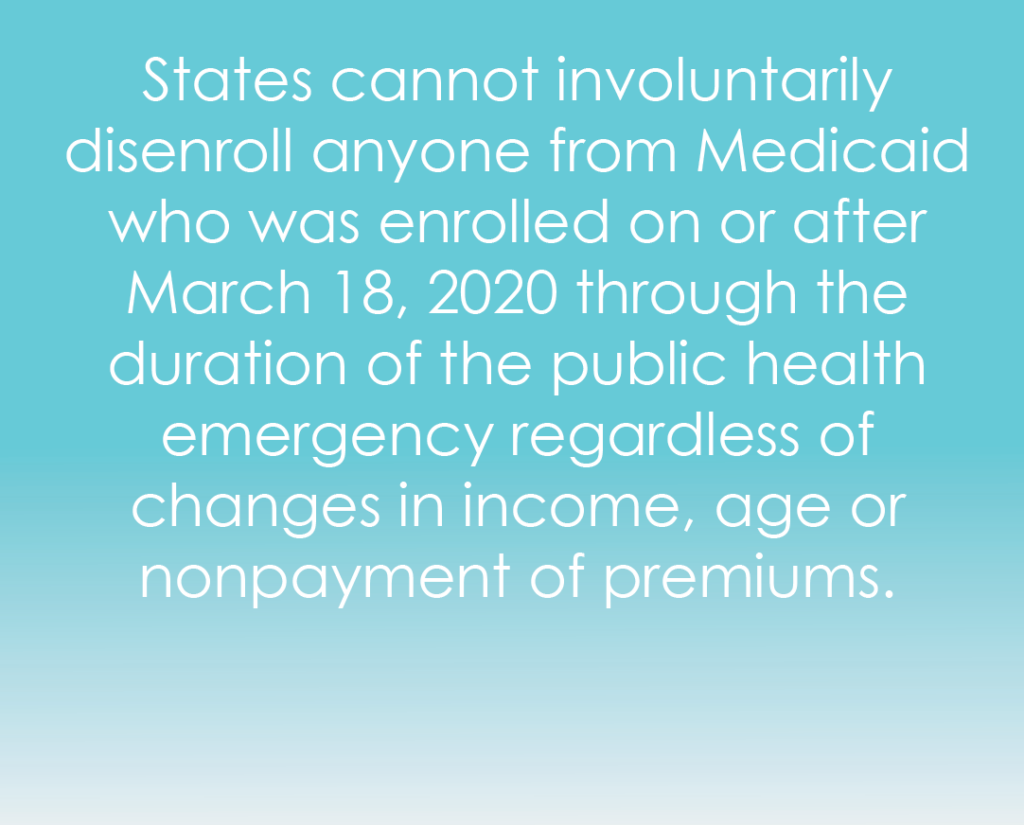The end of the public health emergency is looming, and with it comes the first Medicaid redetermination since 2020.
Medicaid and Children’s Health Insurance Program (CHIP) enrollment has climbed since the start of the pandemic—with upwards of 91 million people becoming eligible for Medicaid. While there are multiple factors contributing to this increase (many which vary by state), it is due largely in part to the provision that requires states to provide continuous coverage for Medicaid enrollees until the end of the month in which the public health emergency ends.

About half the children in the United States (40 million) are now insured through Medicaid or the Children’s Health Insurance Program (CHIP)––the vast majority in Medicaid.
Millions of Children May Lose Medicaid: What Can Be Done to Help Prevent Them From Becoming Uninsured
That time has come. Starting April 1, 2023, states are able to resume Medicaid disenrollment.
Tens of millions of people are at risk of losing their Medicaid coverage—6.7 million of them are children. According to a report produced by Georgetown University Health Policy Institute Center for Children and Families, children in Delaware, Florida, Georgia, Missouri, Nevada and Texas are at a higher risk of losing coverage due to the nature of their CHIP programs.
Each state will make decisions on how they will handle disenrollment. Some will err on the side of continued coverage, which is ideal for the patients but opens up the hospitals for potential backlash and even fraud, waste and abuse investigations. For many if not most public healthcare programs, this volume of work will be significantly larger than has occurred previously.
The renewal process can be burdensome and is likely to be problematic as a number of enrollees have moved, changed jobs or experienced other changes that lead to a longer renewal process; while people who were eligible for coverage for the first time during the pandemic have never been through the renewal process before.
What Is My State Doing?
CMS has required each state to create a plan to guide hospitals through the resumption of normal Medicaid.
As of the writing of this article, 44 states have indicated that they have a public plan or summary in place. 46 states have created communications toolkits for hospitals and health resource workers to use to provide messaging and assets to encourage Medicaid recipients to update contact information with their local human services department to successfully restart renewals once continuous coverage ends.
Look to the Helpful Resources section at the bottom of this article to see what’s available in your state.
What Does This Mean For Hospitals and Their Patients?
There is potential for a great deal of disruption, for patients and hospitals alike, especially within the revenue cycle. Churning is known to happen during the standard Medicaid redetermination process, however with the anticipated volume this time around, it has the potential to be especially troublesome.
One thing is for sure—hospitals should expect a dip in Medicaid revenue. Tools to identify retroactive Medicaid eligibility will be more critical than ever in the late stage revenue cycle to protect hospital finances. Identifying retroactive eligibility will also ensure patients are not left footing the bill for care that should be covered by Medicaid.
Hospitals are good at serving patients regardless of their ability to pay, however when it comes to finding insurance eligibility either retroactively or when insurance wasn’t presented at the time of service, patients are going to end up with patient liability that they simply shouldn’t have.
There will be difficult questions from patients who are at risk of losing eligibility. They may not be aware of your financial assistance program and will look to hospital contacts to provide guidance and counseling.
A Proactive Approach Is Essential To Minimizing Disruptions
States need Medicaid enrollees to make sure their contact information is updated so they can reach out to them to let them know what month their eligibility will be redetermined. The renewal work will begin in April and take place over the next 12 months. Not all enrollees will receive notifications at the same time.
Many states have taken steps to notify enrollees through channels like radio ads, previews at movie theaters and television commercials––but many hospitals are left feeling like they need guidance on what they can do to help the effort.
Text campaigns (for patients who have authorized text communication) are a fantastic way to engage the population in a way that they are used to being engaged. The same goes for social media.
Utilizing the customizable features of your patient engagement platforms is another way to attempt outreach. Instead of an appointment reminder, send out a short message prompting them to update their contact information with their health plan to avoid potential disruption of their insurance coverage.
Identify patients who are frequent utilizers of services and work with advocacy organizations like your county’s human services department and patient navigators to coordinate outreach. Engage with your local jobs and training agency to ensure they are aware of the requirements and arm their representatives with information to distribute to their members.
Most Medicaid enrollees will not be aware that this process is happening, despite the hospital’s best efforts to inform them. Ultimately, enabling enrollees to advocate for themselves will serve to lessen the impacts that are certain to occur.
Helpful Resources
Looking for links to communications toolkits for your state? You can find a comprehensive list here.
The resource listed above includes links to all of the current state plans, FAQs, dashboard information (if applicable) and state renewal reports.
Wondering where your state stands in their planning? Take a look at the 50-State Unwinding Tracker.
10 Things to Know About the Unwinding of the Medicaid Continuous Enrollment Provision



